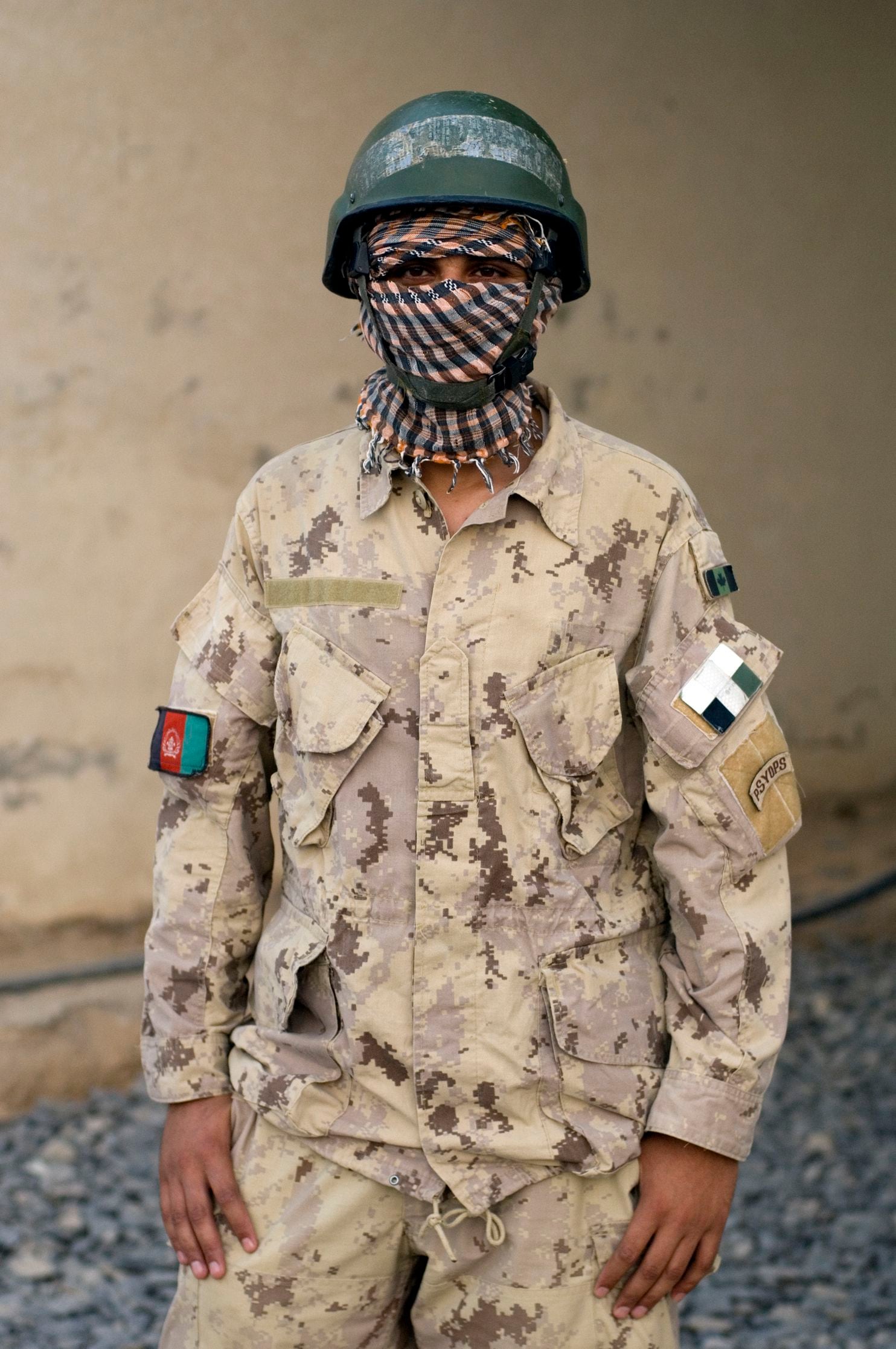‘The voices of U.S. troops’: Portraits of Afghan interpreters

An Afghan interpreter poses for a portrait at a Canadian forward operating base on the front lines of Zhari district in 2008. (Louie Palu/ZUMA Press)
Some of the most memorable experiences I had as a photographer covering the conflict in Afghanistan were my evenings spent with Afghan interpreters over tea. Our conversations usually centered on the patrol or battle from the past day and the dreams they had of making it, one day, to the United States or Canada.
Over countless refills of tea, I learned about their lives. They came from nearly every province in Afghanistan, and most were in their early 20s, growing up in a changing country following the ouster of the Taliban. As a photographer seeking to understand the perspective of Afghan civilians, I had to spend a lot of time with these interpreters on my embeds with Canadian and American troops, and over these years, I got to know many of them.
We slept in trenches, fields and under armored vehicles together. We were shot at, shelled and bombed, and at times we even performed first aid on casualties together. They carried no weapons and hid their faces when on patrol, out of fear that they or their families would become targets. Despite all of this, they always had a great sense of humor, a prerequisite for emotional survival in one of the cruelest conflict in the world.
These interpreters were the voices of U.S. and Canadian troops. They were some of the few links that allowed us to communicate with the local population or train Afghan soldiers, the majority of whom spoke no English. They were more than the translators of word; they also interpreted the culture and the daily lives of the civilians caught between the Taliban and the coalition.
And now, as the United States is making its exit from Afghanistan, this important force in the daily lives of all Western soldiers, diplomats, journalists and NGOs is hoping it won’t be left behind. Last week, facing increasing calls from military leaders, Canada unveiled a new resettlement program for some of them, but the process has become an administrative nightmare for many. In the United States, the Biden administration is planning to temporarily house about 2,500 people — interpreters and their family members — at Fort Lee, Va., with another 4,000 people relocated to other countries around the world.
With the Taliban gaining ground, I just hope the interpreters I met over my years in Afghanistan will make it to safety.

(Louie Palu/ZUMA Press)

(Louie Palu/ZUMA Press)

(Louie Palu/ZUMA Press)

(Louie Palu/ZUMA Press)

(Louie Palu/ZUMA Press)

(Louie Palu/ZUMA Press)
In Sight is The Washington Post’s photography blog for visual narrative. This platform showcases compelling and diverse imagery from staff members and freelance photographers, news agencies and archives. If you are interested in submitting a story to In Sight, please complete this form.
Ukraine’s forgotten veterans lean on one another to rebuild their lives
A photographer’s homage to Nigeria coronavirus front-line workers






